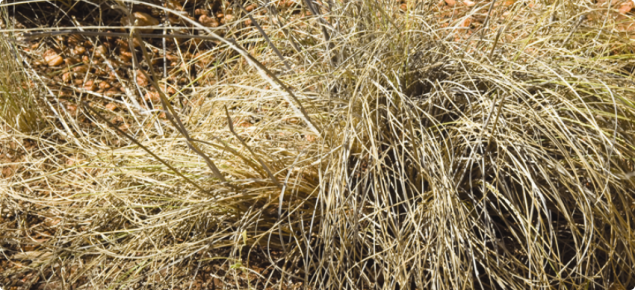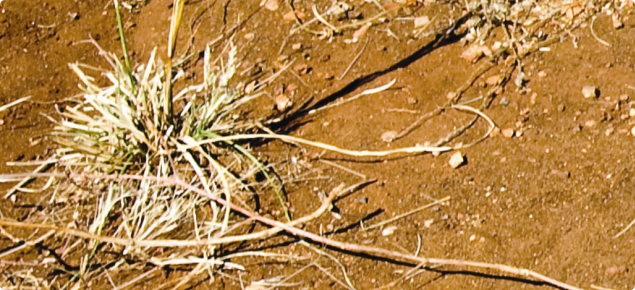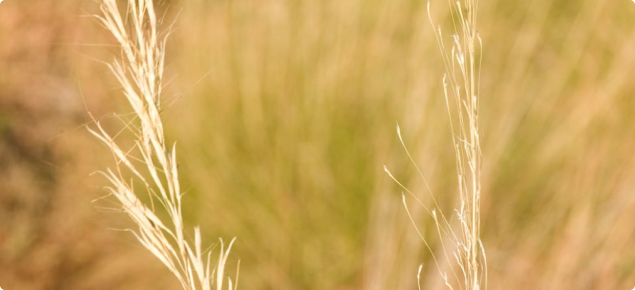Indicator value
Ribbon grass is a reliable indicator of good pasture condition. It is common across much of the Kimberley and on the river floodplains of the Pilbara. Ribbon grass was once an abundant pasture component on the watercourses of the Gascoyne and north Murchison but is not often seen in these areas today.
Forage value
Ribbon grass is only palatable to livestock when green, but heavily grazed plants will be further damaged by animals digging out the fibrous base. It is drought resilient and can survive periodic heavy utilisation, provided it then receives rest.
Habitat
Various soils.
General description
Ribbon grass is a strong perennial tussock grass with long leaves that droop and rest on the ground. The leaf length is up to 30cm, with a width of 4–5mm. The tussock bases are dense and fibrous. Flowering stems are 1–2m tall. The seed heads are purplish to golden brown as they emerge and are up to 20cm long. Individual seed spikelets are clustered in bunches of 3 and individual seeds are about 1cm long. Each seed has a tuft of golden brown hairs at its base and is accompanied by a bent, reddish-brown awn that can extend 2–3cm from the seed.



